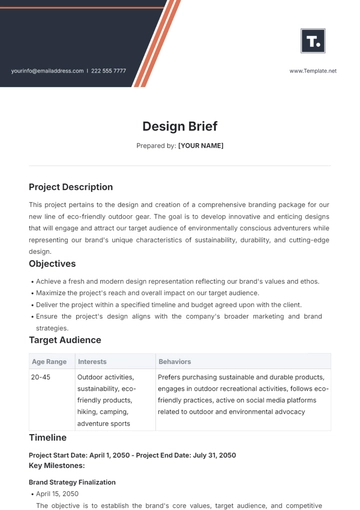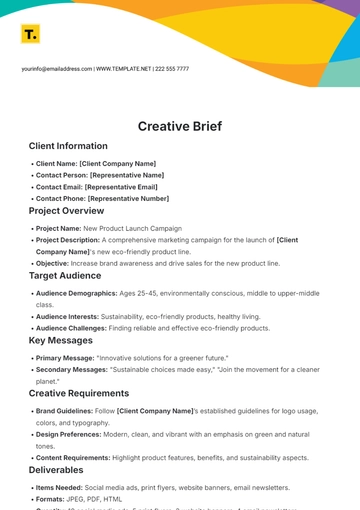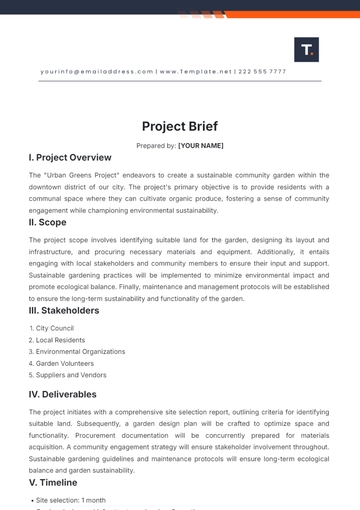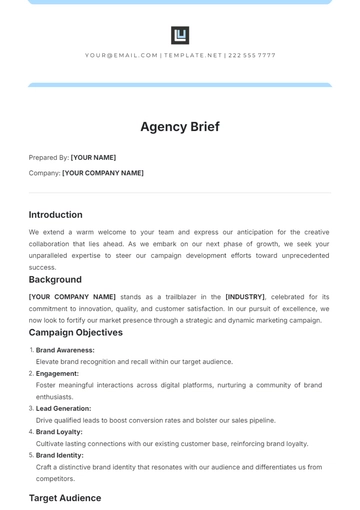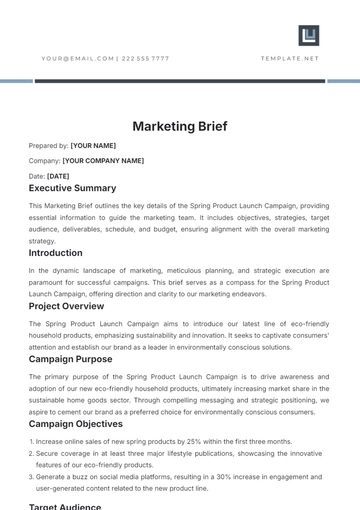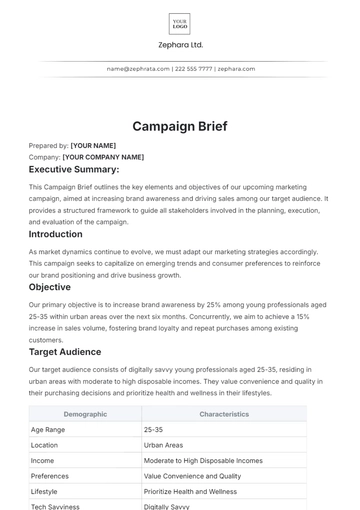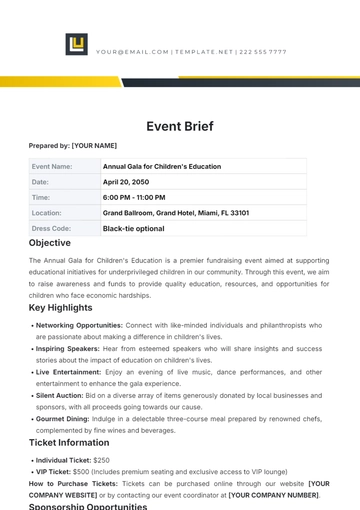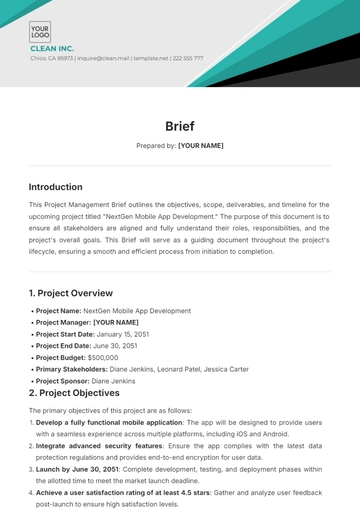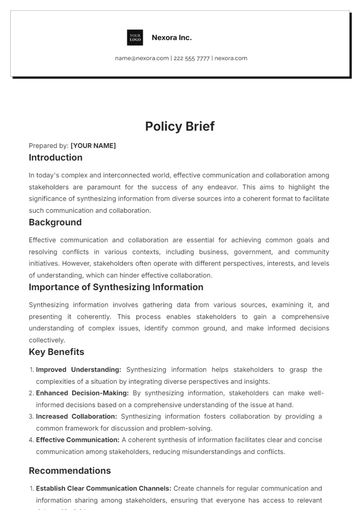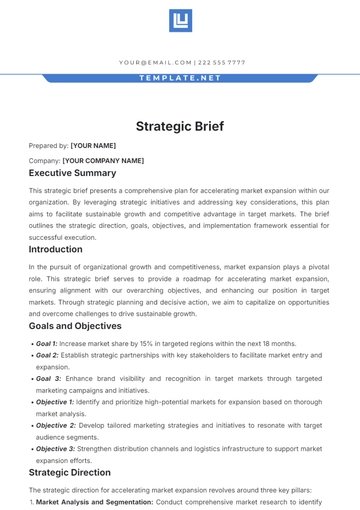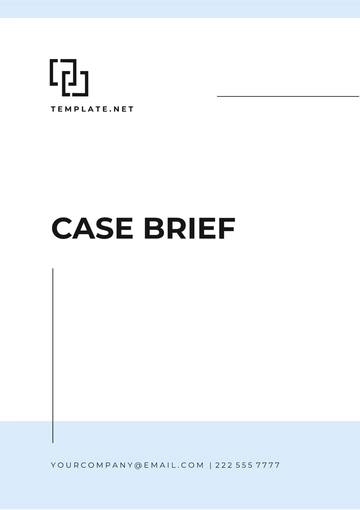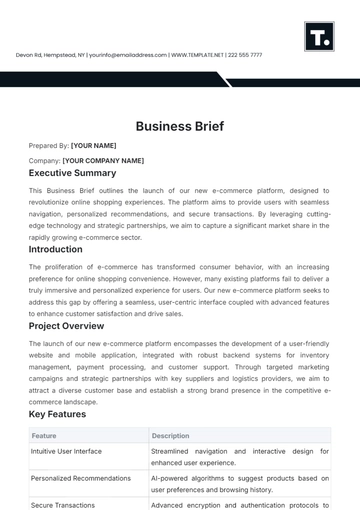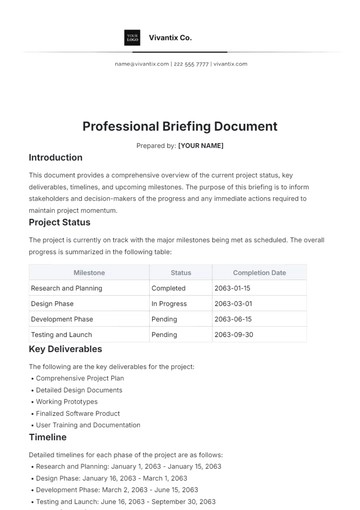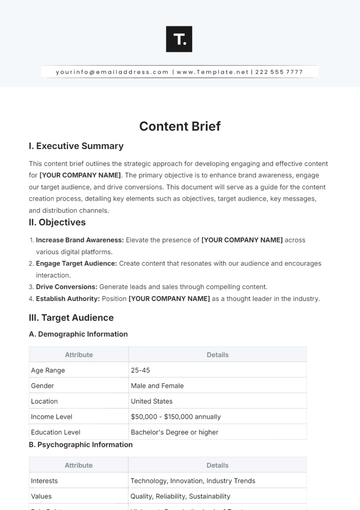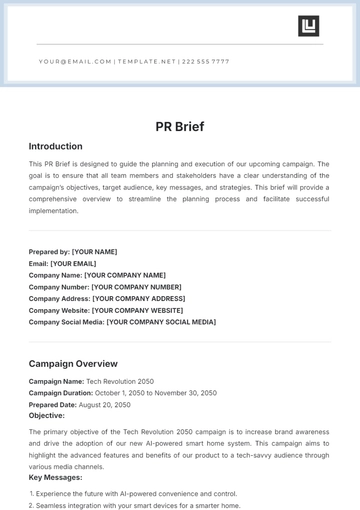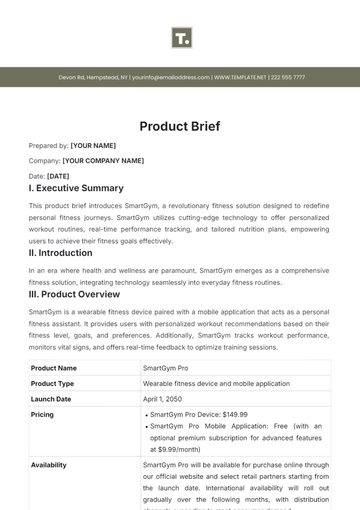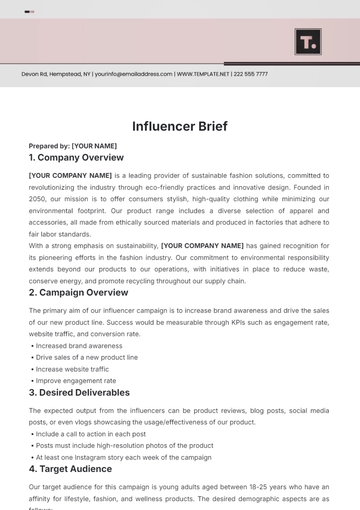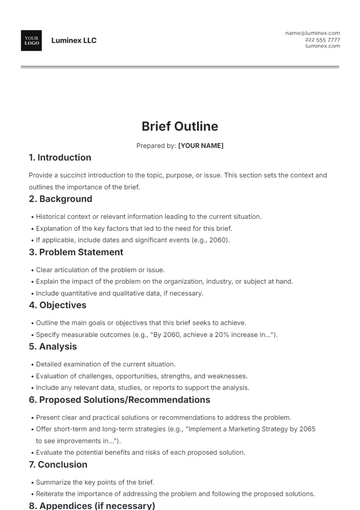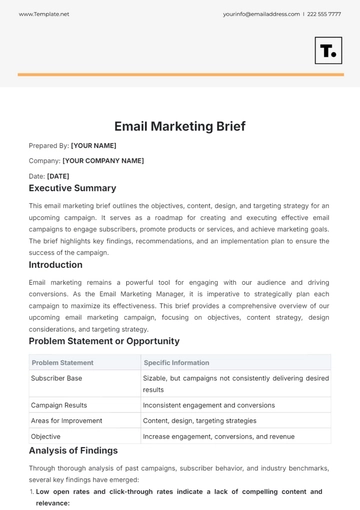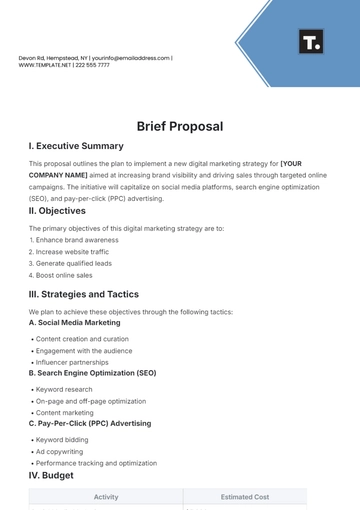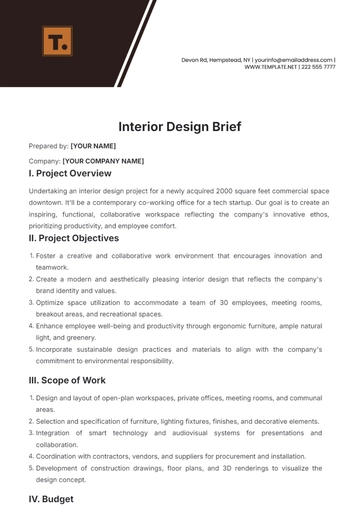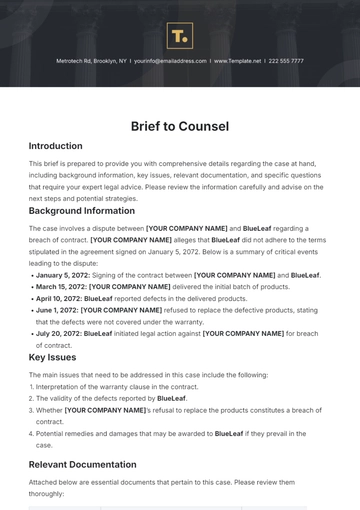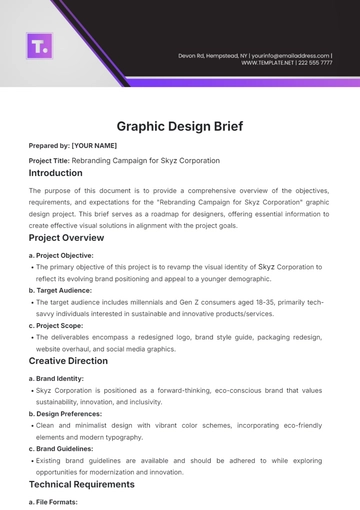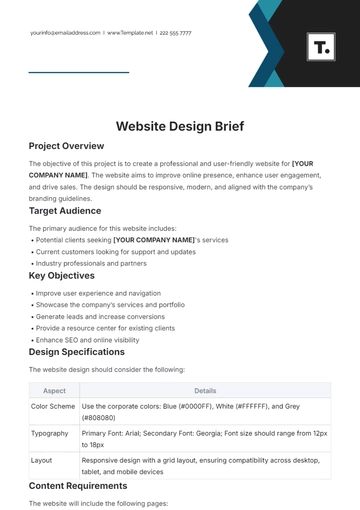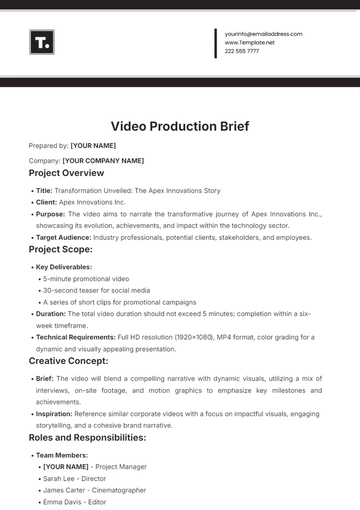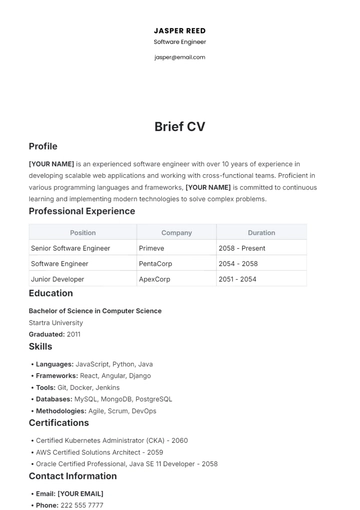Free Website Client Brief
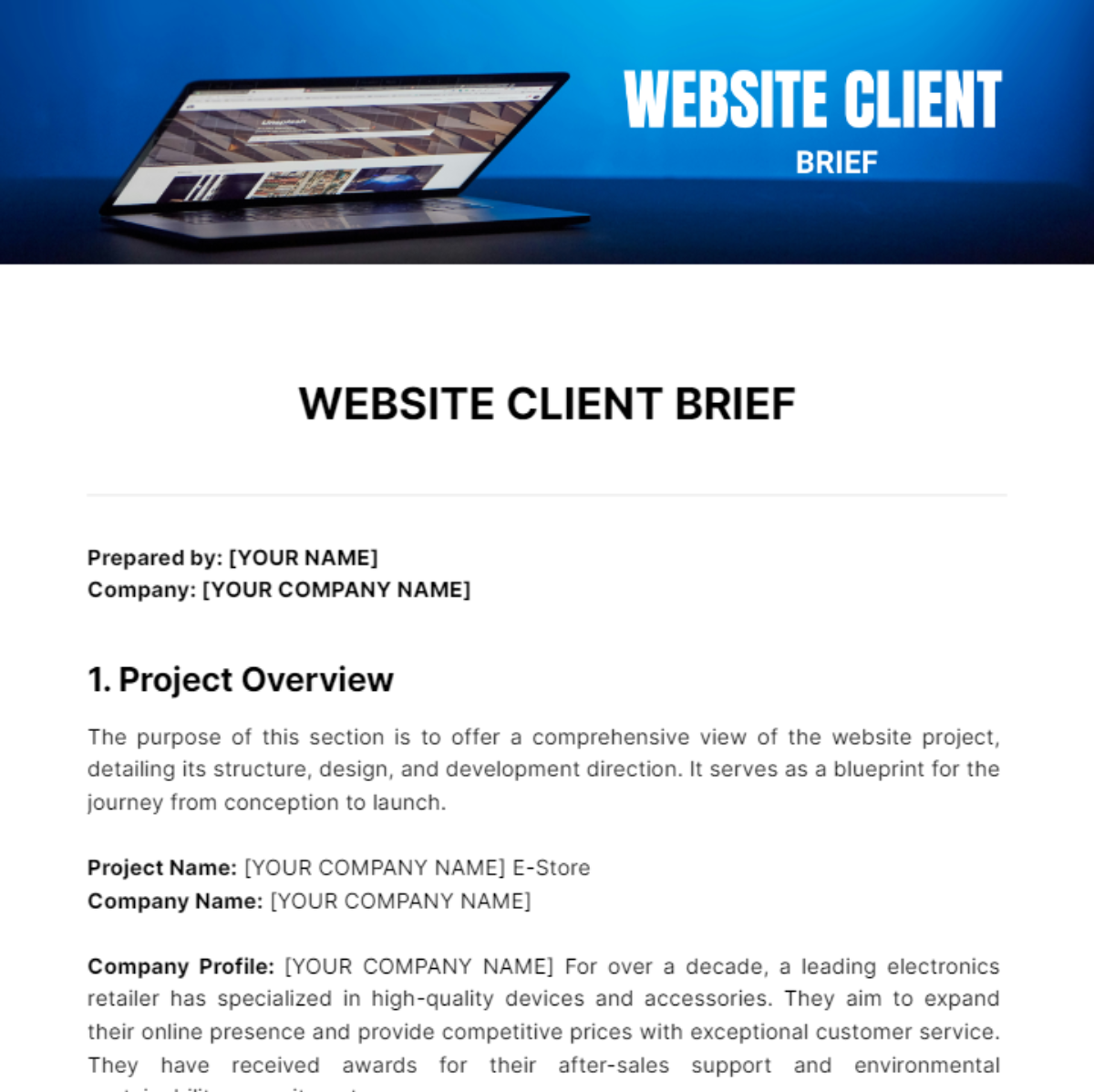
Prepared by: [YOUR NAME]
Company: [YOUR COMPANY NAME]
1. Project Overview
The purpose of this section is to offer a comprehensive view of the website project, detailing its structure, design, and development direction. It serves as a blueprint for the journey from conception to launch.
Project Name: [YOUR COMPANY NAME] E-Store
Company Name: [YOUR COMPANY NAME]
Company Profile: [YOUR COMPANY NAME] For over a decade, a leading electronics retailer has specialized in high-quality devices and accessories. They aim to expand their online presence and provide competitive prices with exceptional customer service. They have received awards for their after-sales support and environmental sustainability commitment.
Website Purpose: The new website aims to serve as an online store for our extensive product range, offering a convenient shopping experience. It features an intuitive interface, detailed product information, secure payment options, and customer support features. The goal is to increase sales, enhance brand visibility, and reflect our commitment to quality and customer service.
Desired Launch Date: We are targeting a launch date of July 15, 2050, to coincide with our 15th-anniversary celebration, leveraging the occasion for promotional activities that will drive traffic to the new site.
2. Specific Objectives
The project aims to achieve key milestones by focusing on website development aspects such as SEO standards, user experience, responsive design, intuitive navigation, and fast loading times, contributing to overall success.
Objective | Description |
|---|---|
SEO Optimization | Ensure that the website complies with SEO best practices to rank high on search engines. |
Responsive Design | The website must be designed to be fully responsive on all devices and screens. |
User-Friendly Navigation | Create a user-friendly website structure with a logical hierarchy, well-organized menu, and search function for quick information retrieval. |
Fast Loading Times | The text emphasizes the importance of optimizing website speed to enhance user experience, reduce bounce rates, and reduce the use of heavy scripts. |
3. Target Audience
Understanding the target audience is crucial for designing a website that meets the needs and expectations of its primary users. This section outlines the demographic profile and specific needs of the website's intended user base
User Demographic:
Age Range: 25 to 45 years old
Interests: Technology enthusiasts, early adopters, and professionals looking for the latest electronic gadgets and accessories.
Geographic Location: Primarily located in urban and suburban areas across the United States.
Occupation: Includes a wide range from tech industry professionals, business executives, and freelancers, to university students in technology-related fields.
Income Level: Middle to high income, with the disposable income necessary for investing in high-quality electronic products.
User Needs:
Product Information: Detailed descriptions, specifications, and high-quality images or videos of products to make informed purchasing decisions.
Comparison Features: Ability to compare different products side by side to understand the value proposition of each item.
Easy Navigation and Search: An intuitive website structure that allows users to easily find specific products or categories of interest.
Secure Payment Options: A variety of secure and straightforward payment methods for online purchases.
Customer Support: Accessible customer service options, including live chat, email support, and a comprehensive FAQ section, to assist with any inquiries or issues.
Reviews and Recommendations: User reviews and recommendations for products to aid in the decision-making process.
4. Content Strategy
The content strategy defines the approach for creating, managing, and updating the website's content to ensure it remains relevant, engaging, and valuable to the target audience. This strategy is crucial for supporting the website's overall objectives, including driving traffic, enhancing user experience, and promoting conversions.
Type of Content:
The website features detailed product information pages, blog articles, customer testimonials, FAQs, and instructional guides and videos. It provides detailed information on product specifications, features, pricing, availability, and features. The blog articles aim to educate and engage customers, while the customer testimonials highlight their experiences and customer service. The FAQs section addresses common product queries and the instructional guides and videos enhance the post-purchase customer experience.
Content Creation:
The marketing team will create detailed product descriptions, images, and demonstration videos, while a professional photography team will handle images. A blog article team will generate informative, engaging content, while a customer service team will curate testimonials. The FAQ section will be regularly updated based on common queries, ensuring relevance. The customer support and product development teams will collaborate to create comprehensive guides and videos, that accurately reflect product use and best practices.
5. Budget and Timeline
This section provides an overview of the anticipated budget and timeline for each key phase of the website project. These estimates help in setting realistic expectations and ensuring that project milestones are achieved within the allocated budget and time frame.
Project Phase | Deadline | Estimated Cost |
|---|---|---|
Design Phase | April 30, 2050 | $8,000 |
Development Phase | July 15, 2050 | $15,000 |
Testing & Launch | August 10, 2050 | $5,000 |
Website Design Phase Overview
• Involves creating visual and UX/UI design, including wireframes, layouts, and color schemes.
• Establishes the website's look and feel, aligning with the brand and target audience.
Development Phase
• Involves front-end and back-end development, CMS integration, e-commerce capabilities, and responsive design.
• Involves specialists like web developers, database administrators, and security experts.
Testing & Launch
• Involves rigorous testing for functionality, usability, performance, and security.
• Resolves any issues and prepares the website for launch.
• Includes planning for the launch day, including marketing activities and press releases.
- 100% Customizable, free editor
- Access 1 Million+ Templates, photo’s & graphics
- Download or share as a template
- Click and replace photos, graphics, text, backgrounds
- Resize, crop, AI write & more
- Access advanced editor
Kickstart your web development process with Template.net's Website Client Brief Template. This tool is crafted to guide you through the intricate process of understanding and implementing client website requirements. With features that are fully editable and customizable, it allows for comprehensive detailing, ensuring that the final website aligns with client expectations, thanks to our AI Editor Tool.
